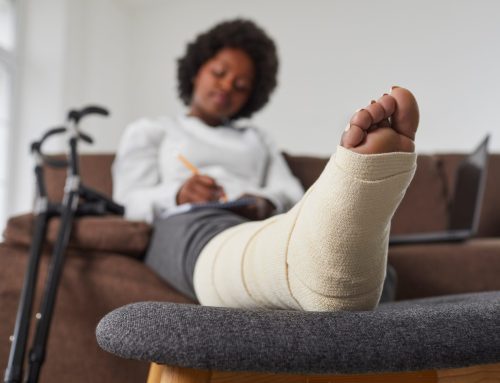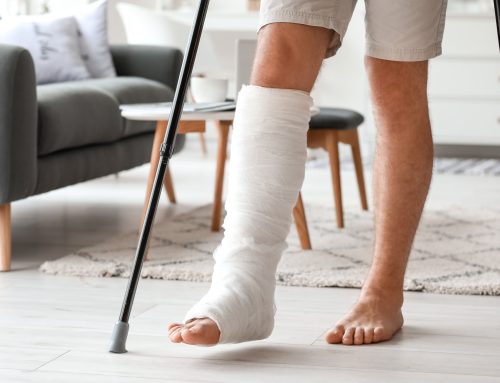In our health-centered world, recovering from an injury or a fracture can feel like an uphill battle. However, understanding the nuances of the healing process can aid in making this journey less burdensome and more efficient. One crucial aspect often misunderstood is the importance of staying active during the recovery period.

Staying Active During Healing: What Does it Mean?
Contrary to conventional wisdom, staying active doesn't mean engaging in strenuous or high-impact exercises. In the context of recovery, it involves undertaking gentle movements and mild physical activities that encourage blood circulation, stimulate tissue repair, and foster overall wellness without straining the injury or causing discomfort.
The type of activities suitable during recovery varies according to the type of injury, personal fitness levels, and advice from your healthcare provider. They may range from gentle range-of-motion exercises and mild strength training to low-impact aerobics like swimming or cycling.
The Benefits of Staying Active During Healing
1. Enhanced Physical Recovery
When you engage in mild physical activity, your heart rate increases, leading to improved blood circulation. This enhanced circulation ensures that vital nutrients and oxygen reach the injury site, accelerating the healing process.
2. Improved Mental Wellbeing
Injuries often come with a psychological toll. The inability to maintain your regular routine, coupled with the physical pain, can lead to feelings of frustration or depression. Light exercise stimulates the release of endorphins, the body's natural mood boosters, helping to combat these negative feelings and improve overall mental health.
3. Prevention of Muscle Atrophy
Lack of activity can lead to muscle wasting, known as atrophy, which further prolongs the recovery process. By keeping active, you prevent muscle loss and maintain strength in the uninjured parts of your body, supporting your eventual return to full functionality.
How to Stay Active Without Compromising Recovery
1. Listen to Your Body and Your Healthcare Provider
Every injury is unique, and so is each person's healing process. What works for one may not work for another. Always listen to your body and consult with your healthcare provider before starting any exercise routine during recovery. It's crucial to keep your body from pushing beyond its comfort zone.
2. Incorporate Low-Impact Activities
Low-impact activities are your best friend during recovery. Exercises like swimming, cycling, or using an elliptical trainer allow you to stay active without putting undue stress on your injury.
3. Range-of-Motion and Flexibility Exercises
Exercises that gently move your joints and muscles can aid in maintaining mobility and flexibility during recovery. Ensure these movements are pain-free and performed under a professional's guidance, such as a physiotherapist.
4. Stay Consistent
Recovery is a marathon, not a sprint. Consistency is vital in maintaining a level of activity that supports healing. Set achievable goals and gradually build upon them, always keeping in mind the primary objective – recovery.
5. Stay Positive
Last but not least, maintain a positive mindset. Healing takes time, and it's normal to experience ups and downs during the process. Remember, every small step towards staying active is a leap toward a successful recovery.
Staying active during the healing process can significantly aid recovery. It boosts both physical and mental health, helping you return to your normal routine faster and stronger. However, it's crucial to approach this aspect of recovery with knowledge, guidance, and patience, ensuring that the activities you undertake contribute to healing, not hindering it.
By embracing the principles outlined above, you can transform your recovery journey from a daunting challenge into an empowering experience. Remember to always consult with a healthcare provider or a rehabilitation professional before embarking on your active recovery plan.
From maintaining strength and improving circulation to bolstering mental health, the benefits of staying active during the healing process are tremendous. Yet, the balancing act of stimulating healing without overtaxing your body requires careful planning, supervision, and dedication.
The journey to recovery can seem daunting, filled with a myriad of challenges and setbacks. But remember, your body possesses an incredible capacity for self-repair and rejuvenation. By coupling that with a positive mindset, an understanding of your body's needs, and the right kind of activity, you can navigate this journey successfully.
So take a deep breath, be patient with yourself, and stay committed to your recovery. And remember – even a gentle walk in the park, a few minutes of stretching, or a leisurely swim counts as progress. In the grand scheme of recovery, every little step matters.
Your path to recovery isn't just about returning to where you were before your injury. It's an opportunity for growth, understanding, and a renewed appreciation for the remarkable resilience of your body. Staying active during recovery is an integral part of this journey – a part that can lead you not just to healing but to a healthier and stronger version of yourself.
As the old saying goes, "The journey of a thousand miles begins with a single step." So why not take that step today – toward healing, toward recovery, and toward a better, healthier you.
If you’ve suffered from a fracture and want faster healing, a Low-Intensity Pulsed Ultrasound device can accelerate your journey 38% faster. It’s non-invasive and only takes 20 minutes a day. Find out more about this healing helper at Fracture Healing.
What are your favourite low-impact exercises? How do you stay consistent with your health routine? Share your experience with our readers in the comments below.





